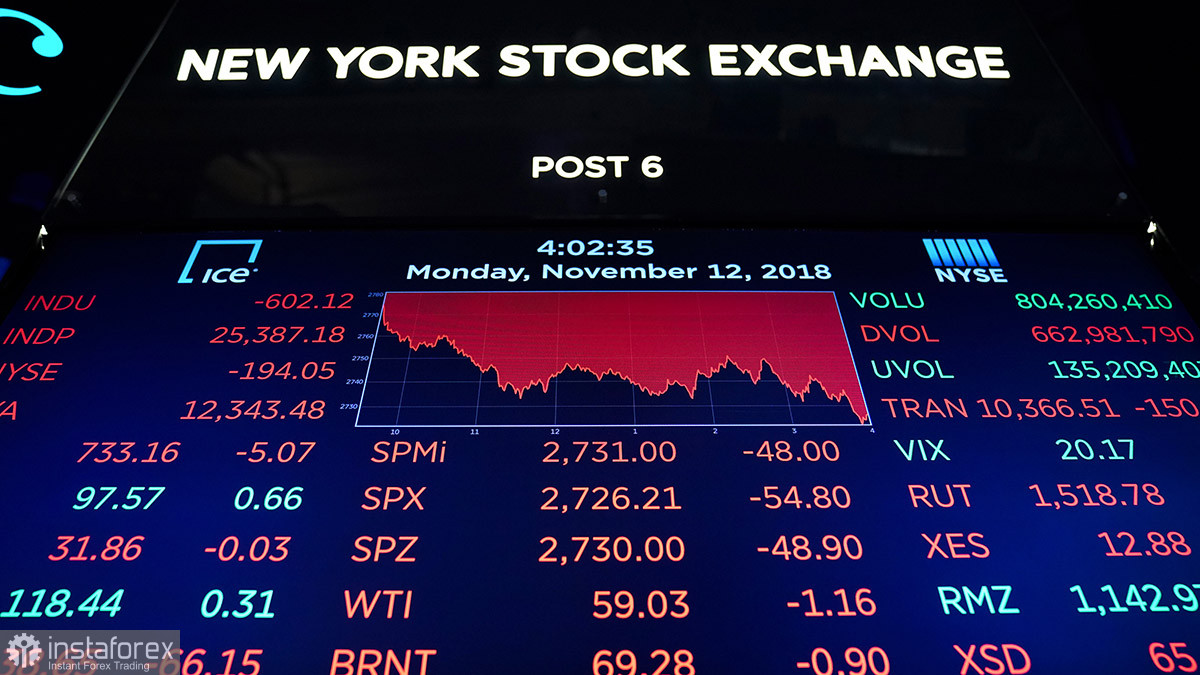
A new downtrend cycle could emerge in the US stock market. In the meantime, let's take a look at one of the strongest correlations between capital markets. It is about 10-year US Treasury bonds. In mid-June, their yields almost soared to 3.5% and then dropped to 2.6%. During the same period, stock indices hit their yearly lows and then rebounded. In other words, when the yield on the 10-year Treasury bonds grows, the stock market falls, and vice versa. What does drive Treasury yields? The Fed's interest rate does. Right now, the rate is at 2.5%, and, as we can see, Treasury yields are approximately at the same level. Why do investors prefer Treasury bonds to stocks? Because they are safe havens with a state-guaranteed return of funds and payment of profits. Moreover, this is not just some state, but the world's largest economy. Naturally, Treasury bonds are in demand even outside the United States. And if their profitability is also growing, it causes an outflow of capital from other markets.
Treasury yields are likely to increase for as long as the Fed raises the interest rate. The yield may well hit around 4% by the end of the year, in our view. Can you imagine how many investors will want to receive a guaranteed return of 4% on the safest investments over the next 10 years, and in the face of slowing inflation? Therefore, the outflow of capital from other markets is likely to continue. We believe that a fall in the US stock market and the crypto market is not over yet.
In addition, the Fed is decreasing the amount of liquidity in the American economy on a monthly basis (quantitative tightening) by reducing its balance sheet by almost $100 billion a month. Meanwhile, quantitative easing (QE) totaled as much as $120 billion a month. During the QE period, both the stock market and the crypto market showed significant growth. Now, there is an opposite reaction to quantitative tightening. Since QT is still ongoing, the market is likely to be in a bear trend. Meanwhile, the inflation report is looming.
 English
English 
 Русский
Русский Bahasa Indonesia
Bahasa Indonesia Bahasa Malay
Bahasa Malay ไทย
ไทย Español
Español Deutsch
Deutsch Български
Български Français
Français Tiếng Việt
Tiếng Việt 中文
中文 বাংলা
বাংলা हिन्दी
हिन्दी Čeština
Čeština Українська
Українська Română
Română

